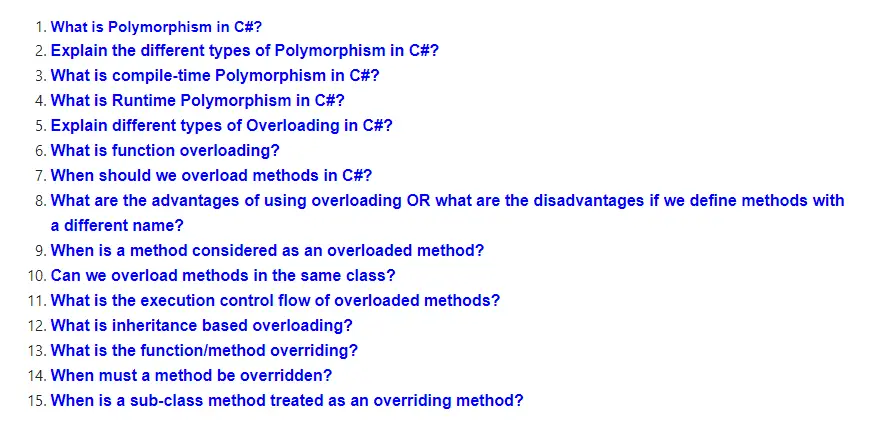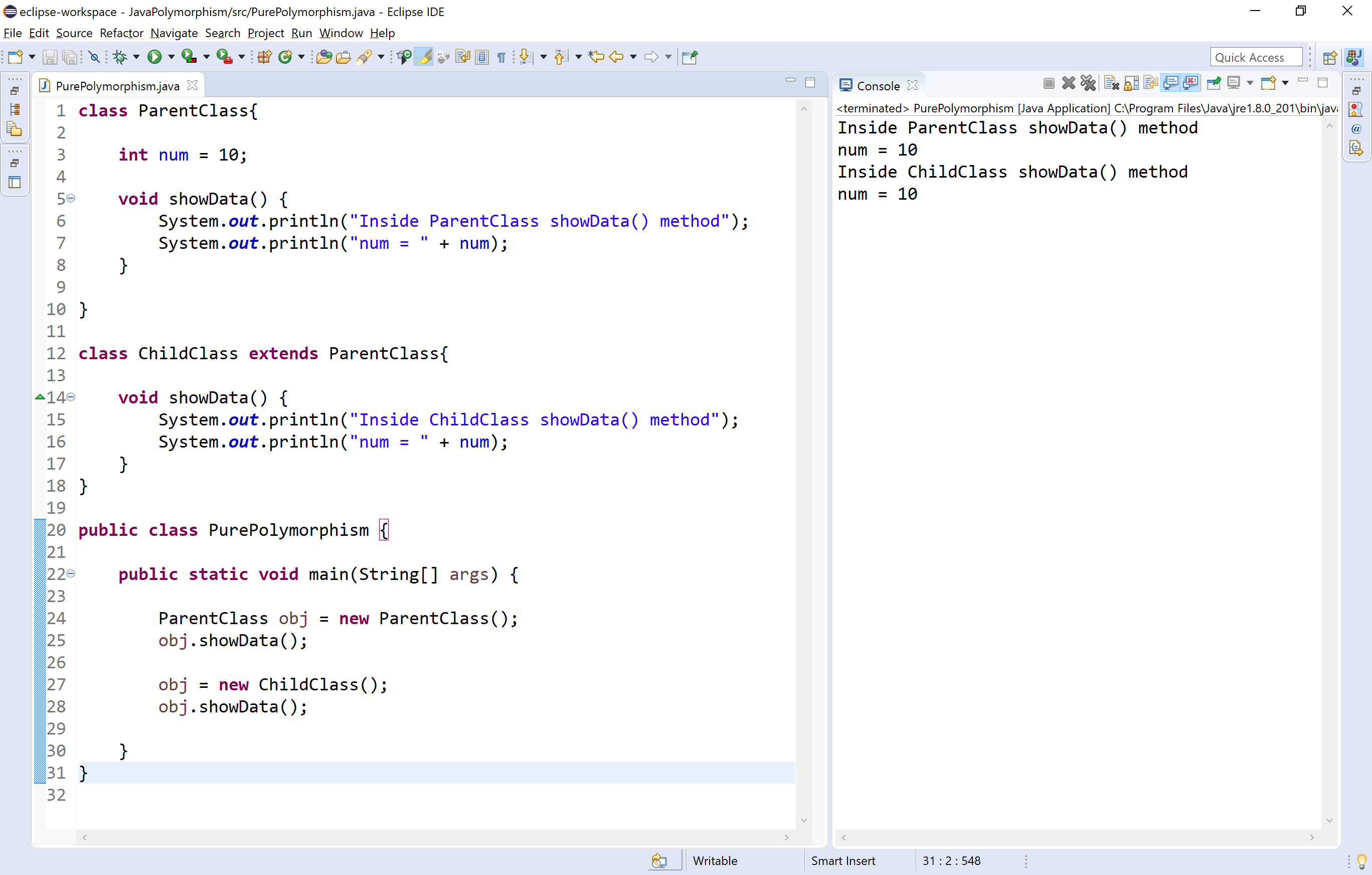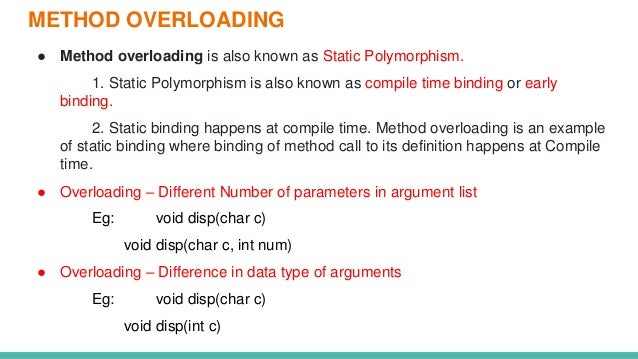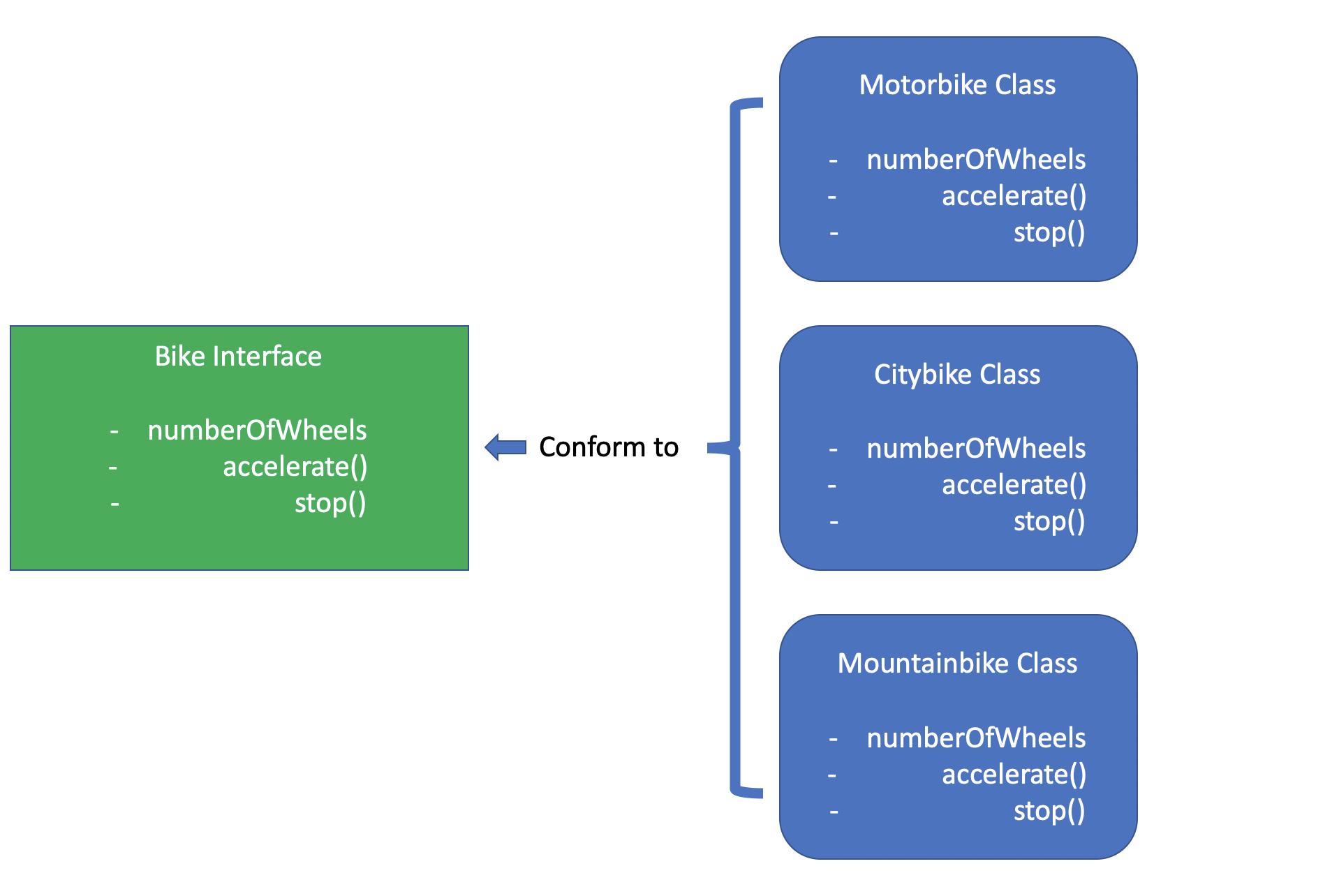

The implementation for inheriting a class would look like this. If we haven't used inheritance we would have to write the move method 5 times with the same exact code, but now we can have one method which can be used by all the 5 subclasses.
A Java example: List myList
Dynamic type: when we create an instance of a class, the type of that class is called the dynamic type. A reason to use inheritance is to avoid duplication, we can reduce the number of times we have to write the same method. For us to study polymorphism we first must understand two concepts: Static type: when we declare a variable, we have to specify a type, that type is called the static type.

can see that the number of methods that the cow class has to implement has reduced. The second method calls subtract(double, double) since we are passing double numbers. Hence, the first method calls subtract(int, int) since we are passing integer numbers.

Now, when we call the method using the class object, based on the type of data, it calls the corresponding method. One has parameters of type int and the other of type double. As a result of passing the IS-A test for their type and the class Object, all Java objects are polymorphic. In Java, any object passing more than one IS-A test is polymorphic. Simply put, polymorphism in Java enables us to accomplish the same function in various ways. In the below code, we have a method subtract with 2 different types of parameters. Polymorphism in Java denotes an object’s capacity to take several forms. ("Area of rectangle: " + area) īelow is an example of method overloading where the same method can have different types of parameters. So when we call the method using 1 parameter, it calls computeArea(int) and when we call the method with 2 parameters, it calls computeArea(int, int). We can implement method overloading in two different ways:įirst, let’s look at an example of method overloading with a different number of parameters. In this example, we have created a class Area that has 2 methods computeArea(int) and computeArea(int, int). The difference in both the method is one has 1 parameter and the other has 2 parameters even though the method name is the same. For us to study polymorphism we first must understand two concepts: Static type: when we declare a variable, we have to specify a type, that type is called the static type. When there are many methods with the same name but different implementations, we call it a method overloading. Let’s understand this in detail with the help of examples. In static polymorphism, during compile time it identifies which method to call based on the parameters we pass. We can implement this type of polymorphism in java using either method overloading or operator overloading. When this concept is applied to object-oriented programming in Java, it describes the ability of a programming language to process objects of different types and classes through a uniform interface. Since it resolves the polymorphism during compile time, we can call also name it as compile-time polymorphism. Polymorphism literally means a state of having many shapes or the capacity of taking different forms. It showed examples of polymorphism used like the Multiplier, class and the different area calculations for different shapes.
#Polymorphism java how to#
This article explained what polymorphism is in Java and how to use it in your applications. When we overload a static method, we call it as static polymorphism. Polymorphism is a handy tool to have when developing with Java or any other Object-Oriented Language. Types of Polymorphism in Javaīelow are the different types of polymorphism in java. To understand this, we need to have an idea of inheritance in java as well which we have learned in the previous tutorial. This type of polymorphism is resolved by the java virtual machine, not by the java compiler. In Java, polymorphism in java is that the same method can be implemented in different ways. It is derived from the Greek words where Poly means many and morph means forms. Polymorphism is a big word that you can break down into poly which means many and morphism which means form. Polymorphism in Java as the name suggests means the ability to take multiple forms.


 0 kommentar(er)
0 kommentar(er)
